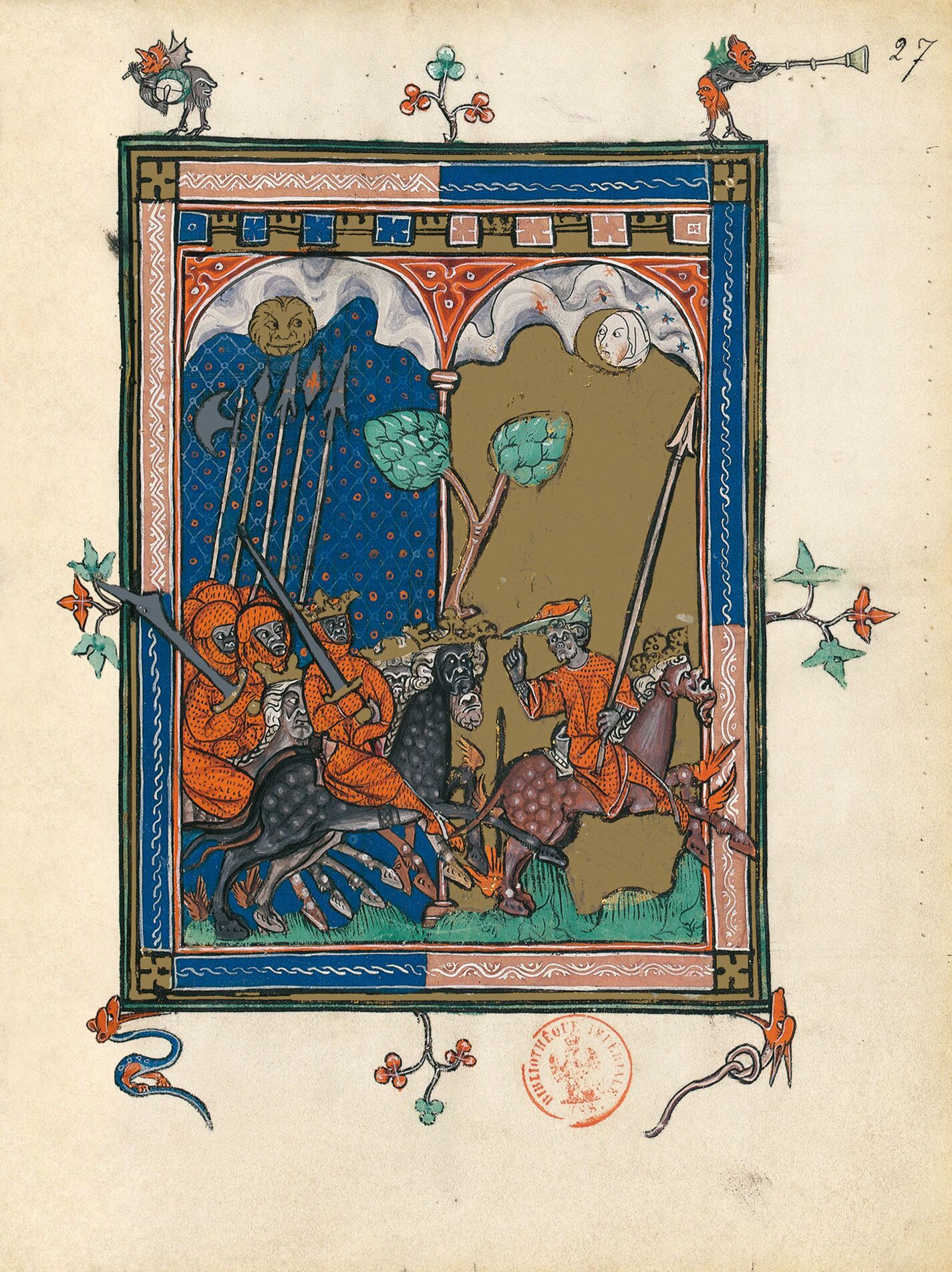The painter has chosen to portray the locusts with iron breastplates and wings which, according to the Apocalypse, rattle like chariots of war charging into battle. The locusts are driven by a cohort of knights in armour led by a secular prince wearing a peaked hat and carrying a giant spear. The embodiment of fate on the move, he seems to be a sort of metaphoric double of the king with a sword following him with his troops: he is the angel of the abyss, Abbadon, a name meaning perdition and sometimes used to refer to Hell. The same idea of destruction is to be found in the etymology of “Apollyon”, used as the Greek equivalent of the Hebrew word, which sounds remarkably like “Apollon”, an ambiguous god not unlike a Hellenic Lucifer. The text emphasises this once again by adding that this crowned king, moving forward at the head of a crowd of soldiers that has emerged from the depths of the earth, is called “Gastans” in Romance, a synonym of damage and havoc.
The well-defined page layout consists of a decorative, double arcature dividing it vertically. On the left, soldiers armed with spears and halberds stand out in orange against a midnight blue, finely carved ground. They are about to wreak havoc upon the world ruled by this mysterious guide on the golden ground on the right who symbolises the irrevocability of God’s wrath.
Marie-Thérèse Gousset and Marianne Besseyre
Illuminated Manuscripts Research Center, Bibliothèque nationale de France
Fragment of the Apocalypse of 1313 commentary volume

The painter has chosen to portray the locusts with iron breastplates and wings which, according to the Apocalypse, rattle like chariots of war charging into battle. The locusts are driven by a cohort of knights in armour led by a secular prince wearing a peaked hat and carrying a giant spear. The embodiment of fate on the move, he seems to be a sort of metaphoric double of the king with a sword following him with his troops: he is the angel of the abyss, Abbadon, a name meaning perdition and sometimes used to refer to Hell. The same idea of destruction is to be found in the etymology of “Apollyon”, used as the Greek equivalent of the Hebrew word, which sounds remarkably like “Apollon”, an ambiguous god not unlike a Hellenic Lucifer. The text emphasises this once again by adding that this crowned king, moving forward at the head of a crowd of soldiers that has emerged from the depths of the earth, is called “Gastans” in Romance, a synonym of damage and havoc.
The well-defined page layout consists of a decorative, double arcature dividing it vertically. On the left, soldiers armed with spears and halberds stand out in orange against a midnight blue, finely carved ground. They are about to wreak havoc upon the world ruled by this mysterious guide on the golden ground on the right who symbolises the irrevocability of God’s wrath.
Marie-Thérèse Gousset and Marianne Besseyre
Illuminated Manuscripts Research Center, Bibliothèque nationale de France
Fragment of the Apocalypse of 1313 commentary volume